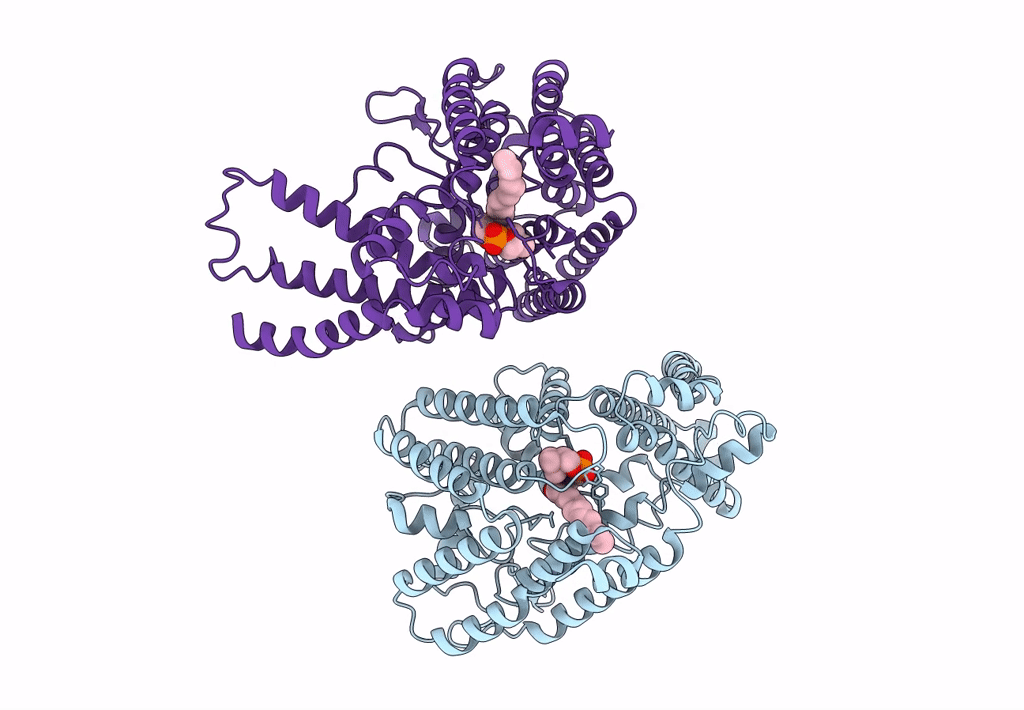
Deposition Date
2021-06-17
Release Date
2021-12-01
Last Version Date
2024-06-12
Entry Detail
PDB ID:
7F3X
Keywords:
Title:
Lysophospholipid acyltransferase LPCAT3 in complex with lysophosphatidylcholine
Biological Source:
Source Organism:
Gallus gallus (Taxon ID: 9031)
Host Organism:
Method Details:
Experimental Method:
Resolution:
3.57 Å
Aggregation State:
PARTICLE
Reconstruction Method:
SINGLE PARTICLE


